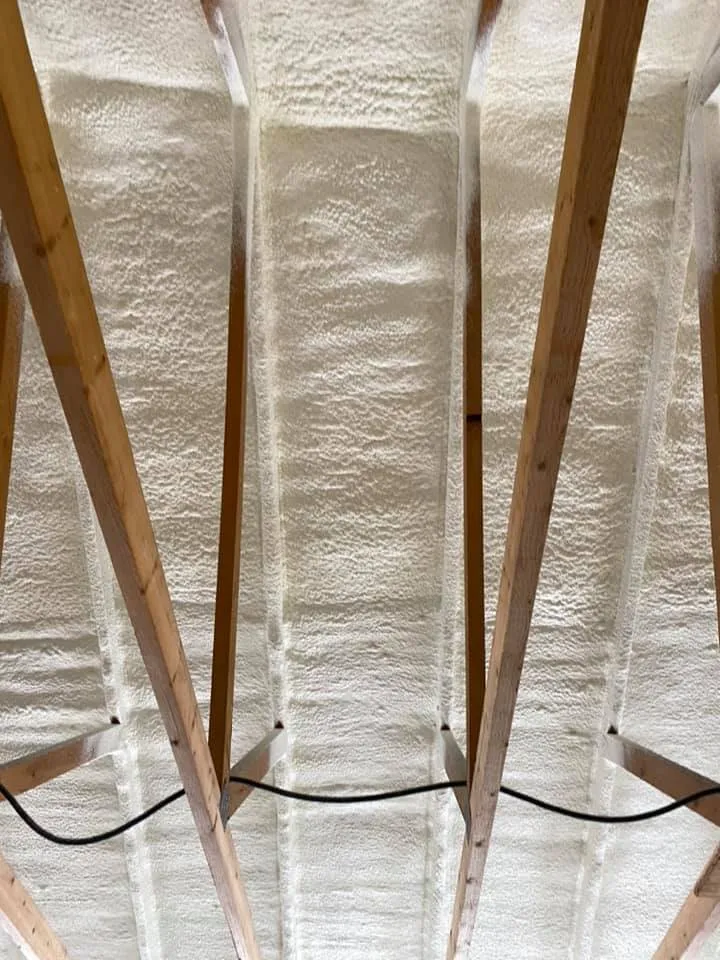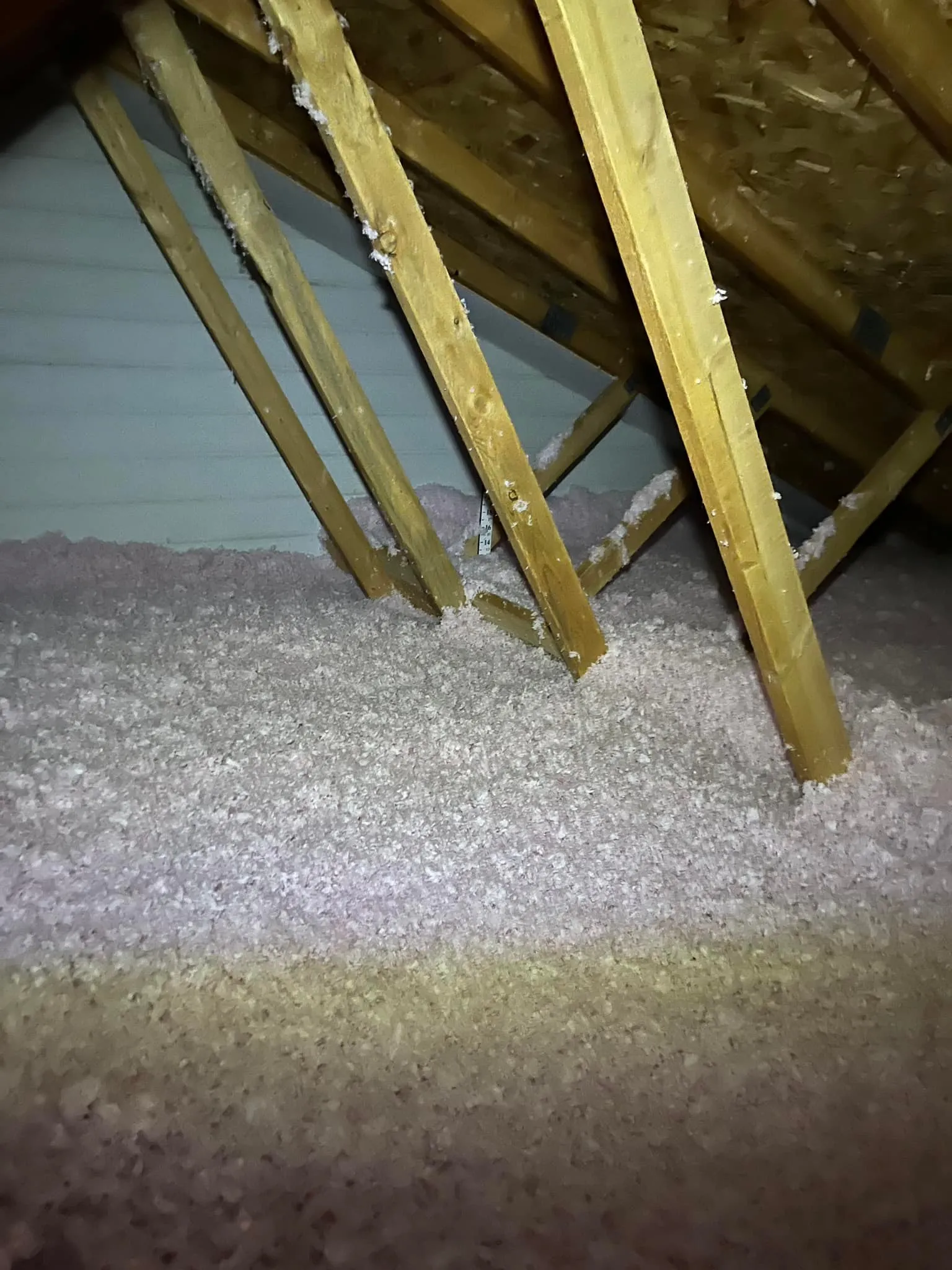

Properly installed spray foam insulation is a highly effective tool for reducing indoor allergens because it creates a continuous, airtight seal. This monolithic barrier stops airborne particles like pollen, dust, mold spores, and other pollutants from infiltrating the home through cracks and gaps in the building envelope. By blocking these entry points, spray foam directly limits the concentration of allergens circulating in your living space. It also provides superior moisture control, preventing the damp conditions necessary for mold and mildew, two of the most common indoor allergen sources, to grow.
This article explains the mechanics behind how spray foam works as an allergen barrier, its role in moisture management, and what factors to consider before choosing it for your home. The information here is based on extensive field experience and an understanding of building science principles for creating healthier indoor environments.
Traditional insulation materials like fiberglass batts and cellulose can leave small gaps and seams around fixtures, electrical wiring, and plumbing. Even tiny openings allow for air leakage, carrying outdoor allergens directly into your home. The U.S. Department of Energy explains that air sealing is a critical step in improving indoor air quality and energy efficiency.
Spray polyurethane foam (SPF) expands upon application, filling every crack, crevice, and cavity completely. This process creates a custom, seamless fit that is impossible to achieve with pre-cut insulation batts. By creating such a tight seal, spray foam effectively blocks the pathways that allergens use to enter.
Moisture is a key ingredient for mold growth. When warm, moist air comes into contact with a cold surface inside a wall cavity, condensation can occur, creating the perfect breeding ground for mold. According to the U.S. Environmental Protection Agency, controlling moisture is the most effective way to control indoor mold growth.
Closed-cell spray foam acts as a vapor barrier, resisting the passage of moisture through the building structure. This characteristic is especially important in humid climates or in moisture-prone areas like basements and crawl spaces. By preventing condensation, spray foam eliminates a primary condition required for mold and mildew to develop, protecting both your home’s structure and your family’s respiratory health. The Asthma and Allergy Foundation of America notes that mold spores are a major trigger for allergy and asthma symptoms.
Bonus Tip: Before any insulation work, it is good practice to identify and repair all water leaks from plumbing or the exterior. Spray foam prevents moisture from getting in, but it can also trap existing moisture if leaks aren’t fixed first.
Not all insulation materials perform equally when it comes to controlling the two main factors in allergen infiltration: air leakage and moisture. The table below compares common insulation types on their ability to create a healthier indoor environment.
| Feature | Spray Foam Insulation | Fiberglass Batts | Blown-In Cellulose |
|---|---|---|---|
| Air Sealing Capability | Excellent (Expands to fill all gaps) | Poor (Gaps and seams are common) | Moderate (Settles over time, creating gaps) |
| Moisture Resistance | Excellent (Closed-cell acts as a vapor barrier) | Poor (Can absorb and hold moisture) | Poor (Can absorb moisture and is chemically treated) |
| Allergen Filtration | Excellent (Creates a solid air barrier) | Poor (Air passes through easily) | Fair (Denser than fiberglass but still allows air) |
| Potential for Mold Growth | Very Low (Resists moisture and is not a food source) | High (Paper backing and trapped moisture can feed mold) | Moderate (Can become saturated if exposed to a leak) |
As the comparison shows, spray foam’s inherent structure gives it a distinct advantage in preventing the movement of both air and moisture, making it a superior choice for homeowners focused on reducing indoor allergens.
Choosing the right insulation involves more than just picking a material. The quality of the installation is just as important as the product itself.
There are two main types of spray foam: open-cell and closed-cell.
The choice depends on your climate, budget, and where in the home it’s being installed.
Spray foam is a chemical product that is manufactured on-site. The process requires precise control over temperature and pressure ratios. Hiring a certified, experienced installer is essential for safety and performance. A poor installation can result in off-gassing, improper curing, and reduced effectiveness. Professionals use proper personal protective equipment (PPE) and ventilation to ensure a safe application.
Making a home extremely airtight with spray foam means you are stopping uncontrolled air leakage. While this is great for energy efficiency and allergen control, it also means that stale indoor air and pollutants can get trapped. A home with a tight thermal envelope must have a mechanical ventilation system, such as a Heat Recovery Ventilator (HRV) or Energy Recovery Ventilator (ERV), to provide a steady supply of fresh, filtered air.
Bonus Tip: Always discuss the home’s overall ventilation plan with your insulation contractor. A whole-house approach ensures that sealing the building envelope contributes to, rather than detracts from, healthy indoor air quality.

Creating a healthier indoor environment starts with controlling what comes into your home. Spray foam insulation provides a powerful, long-lasting solution by creating an airtight and moisture-resistant barrier that keeps common allergens out. It directly addresses the root causes of poor indoor air quality by preventing infiltration from the outside and stopping mold growth on the inside. When considering insulation, think about its long-term impact on your family’s health, not just its thermal performance.
Every home has unique challenges when it comes to insulation and air quality. A professional assessment can help you understand the specific needs of your property and determine the most effective strategy. For a detailed evaluation, contact High Country Solutions to discuss your project. You can reach the team by phone at (307) 248-9063 or by email at [email protected]. An expert can provide tailored advice to help you achieve a healthier, more comfortable living space.
No. Existing mold and moisture issues must be fully remediated before spray foam is applied. Spraying foam over mold will not kill it; it will only cover it up, potentially trapping moisture and allowing the problem to worsen within the wall cavity.
No. Unlike traditional insulation that can sag, settle, or compress, spray foam is a rigid, stable material. It adheres directly to the structure and does not lose its shape or thermal resistance over its lifetime, providing consistent performance for decades.
Closed-cell spray foam typically has an R-value of R-6 to R-7 per inch of thickness. Open-cell spray foam offers around R-3.5 to R-4 per inch. The high R-value of closed-cell foam, combined with its air-sealing properties, makes it one of the most effective insulators available.
Open-cell spray foam is an excellent material for sound dampening. Its soft, spongy cell structure absorbs sound waves effectively, reducing noise transmission between rooms and from the outside. Closed-cell foam also provides some sound reduction, but open-cell is superior for this specific purpose.
Once fully cured, spray polyurethane foam is inert. It does not release particles into the air and is considered safe for occupants, including those with chemical sensitivities. The safety concerns associated with SPF are almost entirely related to the installation process. Homeowners should vacate the premises during application and for a specified curing period, typically 24 hours.
Spray foam and HEPA filters serve different functions but work together. Spray foam is a preventative measure that stops allergens from getting into the home in the first place. A HEPA filter is a remediation tool that cleans allergens already circulating in the indoor air. Using both creates a comprehensive strategy for maintaining excellent indoor air quality.


